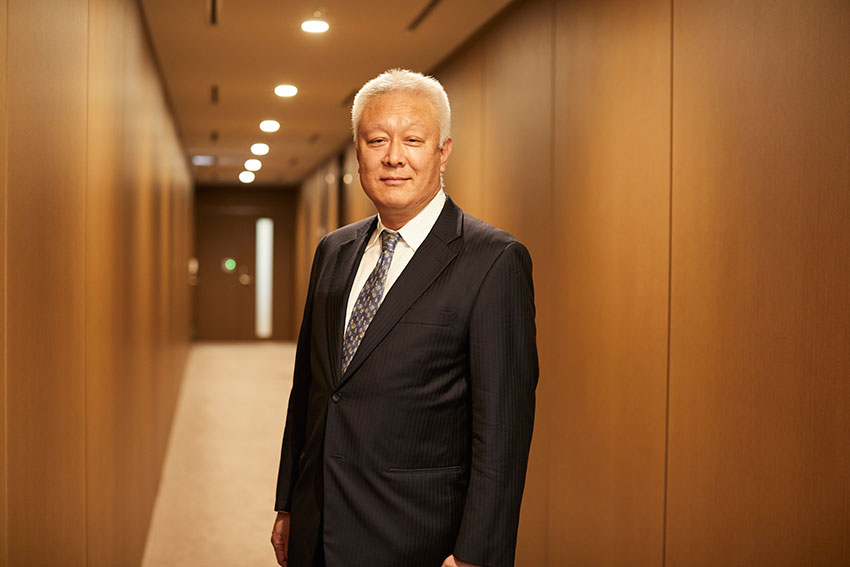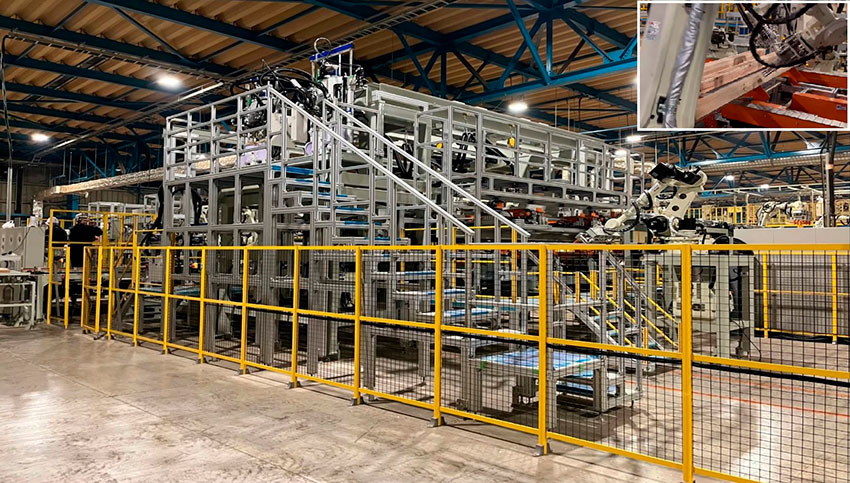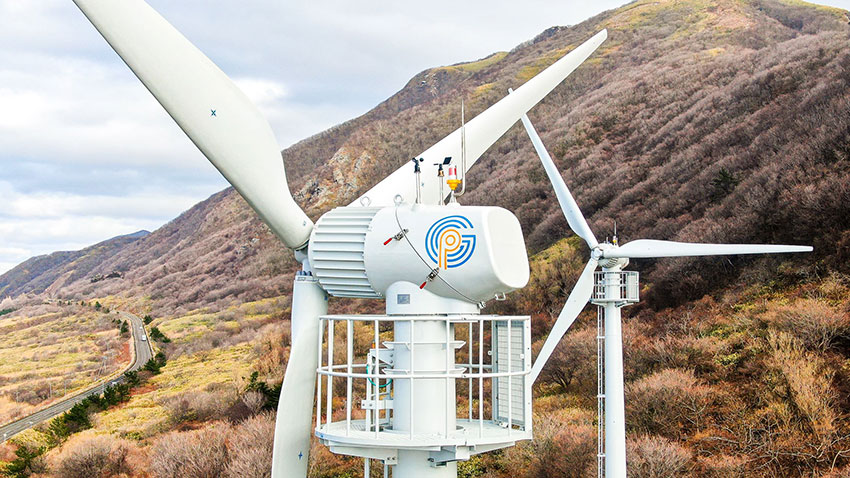A specialized trading firm that has a wide range of customers, Chiyodagumi provides connections to many different industries.

We would like to use your words and your comments to challenge this misperception that Japanese firms have lost their innovative or quality edge in the eyes of a Western readership. With that in mind, given your perspective as an integrated trading company based in Japan, what do you believe to be the core strengths or competencies that set Japanese makers apart from their regional competitors today?
I believe that the strength of Japanese monozukuri lies in the pride of the craftmanship. Japanese manufacturing industries are comprised of a myriad of craftsmen. At every level of the supply chain structure, there are craftsmen who take pride in the quality of their work and in the quality of their products. This means that Japanese companies are able to remain competitive and continue to produce high-quality products stably with strict quality assurance. When a Japanese craftsman says that a product will last for a specific period of time, you can be assured that it will last for that period of time. Having said that, with Japanese companies going to China and Korea and giving advice and instructions on quality assurance to the companies there, the level of manufacturing in those countries has gone up. However, due to the craftmanship spirit of Japanese makers, they are the ones who are creating and innovating for the next generation of technology.
Another uniqueness of Japanese companies is linked to Japanese characteristics. When there is a defect or failure, or if the machinery malfunctions, Japanese makers dig deep into the reason why it has happened. They not only trace it back, but they try to foresee the future and see what kind of effect that defect would have on other components or parts. Overseas, the defective parts are oftentimes just replaced, and that is it. This diligence in discovering the reason why something has malfunctioned leads to the brushing up of the product. Japanese makers take a lot of time when there is a malfunction.
You mentioned the supply chain structure in Japan has craftsmen at every level. We are very curious to hear your thoughts on the role that trading companies play within that supply chain structure, yourselves included. Traders have played a very important role in this structure historically in Japan given that more than 90% of employment in this country comes from chusho kigyos or SMEs, many of which do not have the means or do not want to put resources into direct sales and distribution of their products. They would rather focus on their craftsmanship, for example. It is up to the traders when it comes to distributing their products both within Japan, and also overseas. Could you shine some light into the role that Chiyodagumi plays within the industrial supply chain here in Japan, especially in regard to these chusho kigyos?
When it comes to our role in the Japanese supply chain, we as a trading firm have a wide range of customers. While some manufacturers may only have a vertical sales channel, we provide connections to many different industries. We actually deal with the products of over 1,000 companies, and sell them to over 2,000 companies. Therefore, our strength as a trading firm is having these connections in multiple industries, with many SMEs coming to us to utilize our sales capabilities in order to increase their product sales. By growing together, we have been able to create synergy with our customers. We are able to handle everything from massive facilities to the smallest components, so we have a wide range of products. Many of our customers ask us to find specific things that they are looking for, so we act as a mediator in finding what they need.
We are curious to hear more about how you think your role is evolving. Traditionally traders have been responsible for logistics, financing and critically, for providing information. We are now seeing the role transform for trading companies to add value to their services in new ways, whether that be through collaborations with manufacturers, or R&D and product development. Can you tell us your perspective on how the role of trading companies in Japan is evolving?
There are two different types of Japanese trading firms. The first are the major trading firms or the sogo shoshas, who actively go overseas to import energy or resources. However, our business model is to focus domestically at first considering the ever-changing economic situation. We grow our internal network by grasping the needs and wants of our customers, and by continuously having discussions with our customers, we are able to increase our customer portfolio. However, with time, we have added a manufacturing capacity in our group company, and we also do construction work. Currently as a group we have a synergetic effect, not only as a trading firm, but also as a manufacturer and constructor.
We are seeing a change or transformation for many of these SMEs due to Japan’s aging population and the shrinking domestic market. A growing need for many of these SMEs in Japan is that they have to go overseas or are interested in going overseas to compensate for the shrinking market in Japan. How are you addressing that challenge in being able to serve as a bridge to help them expand their networks beyond just Japan?
We do have our overseas bases. However, currently their purpose is to understand and gather information on the local business habits and practices alongside actual business. That helps us to find new business opportunities. By going overseas and understanding the local area, we will be able to work with Japanese manufacturers that go abroad. However, we are still at the information gathering stage. Many of our SME clients in Japan are asking us to expand their sales channels overseas using our overseas bases. Once we find a steady footing and ensure that we have a good financial balance at our local bases, we will be able to explore these new opportunities.
We read about the robotic systems that you are introducing for automating wood repair work, which is very interesting as this is typically an activity that relies very heavily on craftsmanship and the trained eye. We would like to know a little more about how Chiyodagumi is supporting Japan’s efforts for digitalization.
Our wood repair automation system is actually part of our DX initiative. Conventionally this was the work of the craftsmen, especially the more experienced and aged craftsmen who manually repaired the wood. However, our automated device can automatically determine how many holes there are in the wood. Our system provides all kinds of important data such as where the wood was procured from, for example. It can also tell you when the wood was procured, which allows you to estimate how much glue is needed for the repair. This kind of data gathering and data analysis is very effective for the customers.

As for robotics, we deal we so many different robotics companies that we can act as a bridge in combining their technologies. We often go to talk with the customers onsite and propose new technologies by combining the technologies that we handle. That is how we are able to promote and introduce robotics in our customers’ facilities.
This attempt at DX in the timber industry is actually something new. We had not worked with the timber industry before. The company that was looking for this technology was only seeking companies that had previously dealt with the timber industry. However, no company responded with the technology they required. Even though we had not dealt with the timber industry previously, we offered to create and give them the technology that they needed. We hope that in the future this will become one of our pillars, and help us to continue growing in this new field.
Earlier you mentioned a little about the synergies of your many business divisions. We talked about equipment for the factories, DX and robotic integration, and materials for manufacturers and clients. We talked about construction, and we talked about new clean energy for the clients themselves. Obviously, you are involved in many different industries. Can you tell us about some of the main or overarching synergies that make this business model so effective in your view?
The synergy that we create is embedded in our company structure and company culture. We have a very strong horizontal relationship within our departments. If one department hears something from the customers, they will pass it on to other departments or our group companies. For example, one of our pillars is a small-sized wind power generator that was actually proposed by one of our customers. They suggested that we should enter the energy business. This small-sized wind generator has an advantage since it does not require environmental assessment and the installation period is not long. It electric-generating capacity about 20kw but it is an effective renewable energy source. Many of our customers know about this since we have a variety of businesses. For example, one of our customers in the elevator business asked us if we do energy generation. We proposed our wind energy generator to them and they took it. This type of synergetic effect can be seen across our businesses.
One of the strengths of our company is that we have business with many specialized manufacturers. Our role is to connect and weave them together so we can create a collaborative spirit and promote group collaboration.

You just mentioned your small to mid-sized wind turbines, which do not require as strict of an environmental assessment, and this can really shorten the lead time for building these structures. However, renewable energy infrastructure and construction is a relatively new type of business, and there are still a lot of challenges. For example, small to mid-sized wind turbines have a very high initial cost, and maybe most importantly, they have a much lower output. How is your energy business addressing these challenges?
When it comes to our wind power generator business, we do have our own wind farm. It is actually very cost-effective depending on where you place the turbine. It takes around only five months to be able to install, as the initial cost is quite low. However, in Japan, solar power is the renewable energy that is being most widely pursued. With energy costs growing, we are now actively proposing to factories and facilities to construct solar panels on their roofs. This will allow them to self-consume the power generation, and many of them are interested in our proposals.
It is interesting that we are seeing this transformation in real time. Japan is definitely a forerunner in embracing renewable energies. In the LDP’s latest proposed energy split for 2030 for Japan, between 35% and 38% was set aside for renewable sources. What do you see as the main roadblocks that are persisting before Japan can reach that target of 38% and become more carbon neutral?
The key for renewable energy penetration is of course its storage. Storing the power is essential to being able to use it. Recently, Tokyo and Kawasaki announced that if you are building new homes, you have to have a solar panel from the beginning. If the government can give subsidies for the purchasing of storage for solar generated power, and also if the manufacturer can develop effective storage, then the use of renewable energy will increase.
We heard many times from traders about the importance of business alliances perhaps with other traders or distributors acting in other localities. Is that something that you have explored or are interested in?
Our overseas business is still in the fresh start. We are still gathering local information and learning about the local business. We have bases overseas and we have already collaborated with local companies in some areas. However, we are still determining who we should partner with and what kinds of business contract information each and every country has.
I became the president during Covid, so it was difficult to go overseas. That may be the reason why I still do not feel familiar with the overseas market. However, we want to utilize our overseas bases in our future expansion overseas more. Wherever we have a base, there are Japanese companies operating there. Our business model is to provide products to those Japanese companies. We also want those local bases to be able to sustain themselves.
You talked about being right on the precipice of this next stage. What do you see as the main challenge that remains before you can enter that next stage? You mentioned that you still have to find who to partner with. We are very curious to hear about your strategy for further international expansion, whether that be a target region for example, or how you are going to overcome these remaining challenges?
Our area of focus is currently wherever we have our bases. However, we have our eye on growing markets like Vietnam and India. Going from our overseas bases to these countries would be easier than going directly from Japan. First, we need to focus on our overseas bases and then expand new markets with some of our clients. As you mentioned earlier, Japan has a shrinking market, so we understand that we have to go abroad.
Your company is this year celebrating its 114th year anniversary. Imagine that we come back six years from now for your 120th year anniversary as a company and have this interview all over again. What would you like to tell us? What are your dreams for this company and what goals would you like to have accomplished by then?
By our 120th year anniversary I want to have made our overseas bases more expansion. Also, I would like to have bases that has been converted from liaison offices into local subsidiaries in growing markets. In order to do so, I must have a strong and stable business in Japan. I will deepen relationships with existing business partners, and expand our business, for example, in the food industry. And I grow the company while being firmly aware of our brand statement, " Connect, Construct, Co-create." I want to be a company that makes people smile.
0 COMMENTS